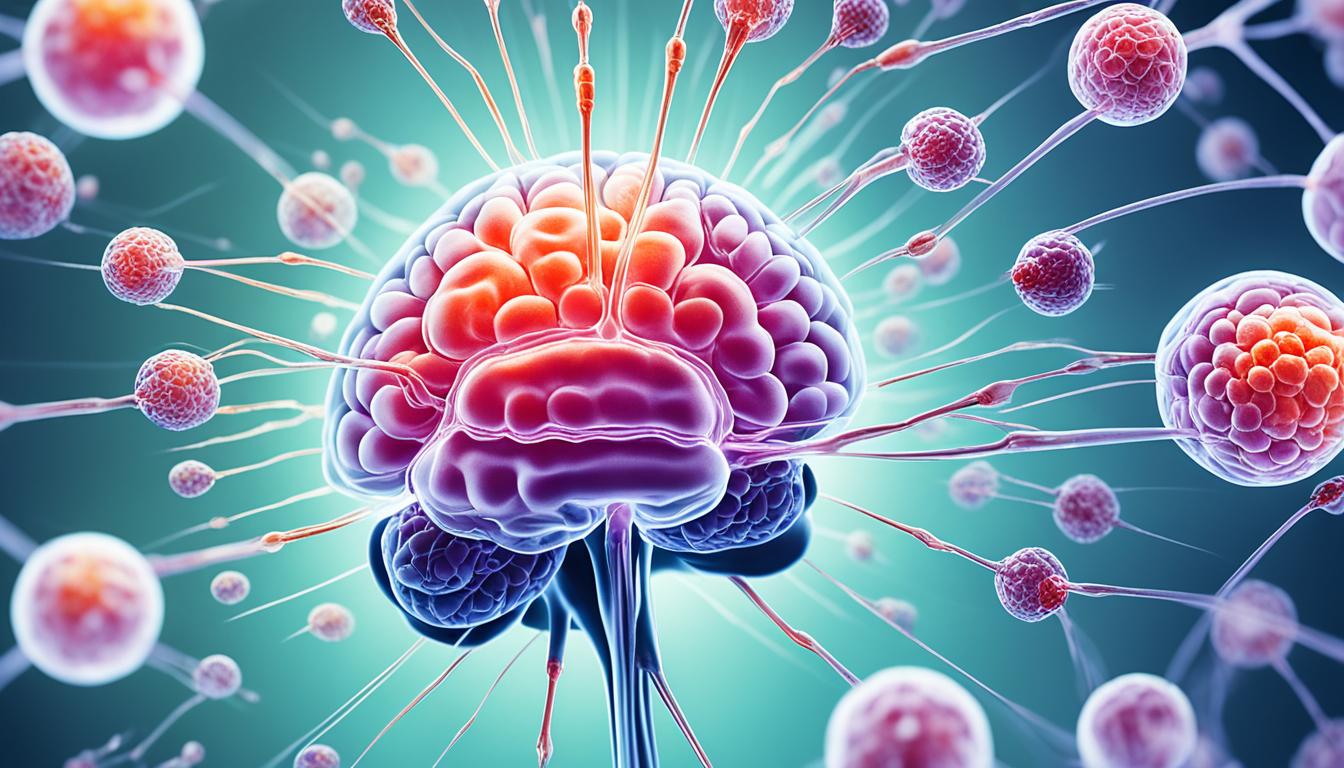A stroke happens when the brain loses blood flow, leading to brain damage or death. It affects life quality significantly. Knowing about its symptoms, causes, and treatments is key for better results.
Strokes come in two types: ischemic and hemorrhagic strokes. The first is due to a blood clot, and the latter is from a ruptured blood vessel. TIAs and cerebrovascular disease are additional concerns.
Many things make a person more likely to have a stroke. These can be high blood pressure, heart disease, smoking, or a history of stroke. Taking care to prevent strokes is very important.
Stroke signs can show up suddenly. They may be one-sided weakness, confusion, or trouble speaking. Immediate medical help is crucial.
To detect a stroke, doctors perform a physical check and ask about your health. They use brain and heart imaging for a clear picture.
Treatments cover medicines, surgery, and rehab. Medicines, like tPA, aim to break up the blood clot. Surgery fixes blood vessels, and rehab helps recover lost skills.
Now, stem cell therapy is gaining ground for treating strokes. It might help the brain heal and restore neurological function. Studies are working hard to prove its value and safety.
Key Takeaways:
- CVA, also known as a stroke, is a severe issue from brain blood loss.
- Ischemic and hemorrhagic strokes are the two main types.
- High blood pressure, diabetes, smoking, and obesity raise stroke risks.
- Spotting stroke signs and getting fast help is critical.
- Diagnosis includes exams and medical tests.
- Treatment involves drugs, surgeries, and recovery programs.
- Stem cell therapy shows promise for stroke healing.
Types of Stroke and Risk Factors
Strokes come in two main types: ischemic and hemorrhagic. An ischemic stroke happens when a blood clot blocks a brain blood vessel. This cuts off oxygen and nutrients. Hemorrhagic strokes, however, are caused by a blood vessel breaking and bleeding into the brain. This difference doesn’t change the fact that both can lead to severe brain damage and long-lasting disabilities.
A transient ischemic attack (TIA), or “mini-stroke,” is a lot like a stroke, but it’s temporary. It happens when the blood supply to the brain is blocked for a short time, often just a few minutes. Even if it’s short-lived, TIA is a serious warning sign of a future stroke and should not be overlooked.
Several factors can raise the risk of someone having a stroke. These include issues like high blood pressure, diabetes, and heart problems. Lifestyle choices, such as smoking and not being physically active, also play a big part. Knowing these risk factors is essential for preventing and managing strokes.
- High blood pressure
- Diabetes
- Heart diseases
- Smoking
- Personal or family history of stroke or TIA
- Age
- Race
- Alcohol and drug use
- Physical inactivity
- High cholesterol
- Unhealthy diet
- Obesity
It’s important to note that some racial and ethnic groups face a higher stroke risk. For instance, African Americans are at a greater risk. Understanding and addressing these factors can significantly lower the risk of strokes and their impact.
Types of Stroke:
| Stroke Type | Description |
|---|---|
| Ischemic Stroke | Caused by a blood clot blocking a blood vessel in the brain. |
| Hemorrhagic Stroke | Caused by a blood vessel that breaks and bleeds into the brain. |
| Transient Ischemic Attack (TIA) | Similar to a stroke, but blood flow to the brain is blocked only temporarily. |
Symptoms and Diagnosis
It’s important to spot stroke symptoms quickly for fast treatment. The quicker a stroke is identified, the better the treatment’s success rates.
Strokes often happen fast and show different signs based on the brain area affected. Key symptoms include:
- Sudden weakness or numbness on one side of the body
- Confusion
- Difficulty speaking or understanding speech
- Trouble seeing
- Difficulty walking
- Dizziness
- Loss of balance or coordination
- Severe headache
If you see these signs in yourself or someone else, don’t wait. Call 911 right away or get to a hospital. Time is critical with strokes because quick action can reduce brain harm and better the chances of recovery.
To diagnose a stroke, doctors do many checks to determine its type and severity. They’ll examine you, check your health history, and run tests like:
- Brain scans like CT or MRI
- Heart checks to see how it’s working
- Blood tests to check clotting and general health
These tests are vital for a proper diagnosis, figuring out the stroke’s cause, and setting the right treatment path.
The image above shows a doctor running tests on a stroke patient. Precise and early diagnosis is crucial for the best care.
Treatments and Prevention
The treatment for a stroke varies based on its type and stage. Ischemic strokes may be treated with medications like tPA to dissolve the blood clot. Blood thinners can stop new clots from forming. Sometimes, special procedures are needed to open clogged arteries or fix damaged ones. For hemorrhagic strokes, the main goal is to stop the bleeding and reduce brain pressure. This might require medicines to lower high blood pressure. In severe cases, surgery is an option.
Rehabilitation is key for stroke survivors. It helps them recover lost abilities and become self-sufficient. They work with physical, speech, and occupational therapists. This helps them get stronger, improve movement, talk, and think better.
Preventing strokes is very important. Steps to help include keeping your blood pressure in check and managing diabetes. Also, stop smoking and live a healthy life. This means regular exercise and a good diet. Always take the medicines your doctor prescribes.

